Volume 2, Issue 2
Displaying 1-5 of 5 articles from this issue
- |<
- <
- 1
- >
- >|
Original Article
-
Article type: Original Article
2006 Volume 2 Issue 2 Pages 19-28
Published: 2006
Released on J-STAGE: June 20, 2008
Download PDF (136K) -
Article type: Original Article
2006 Volume 2 Issue 2 Pages 29-34
Published: 2006
Released on J-STAGE: June 20, 2008
Download PDF (62K) -
Article type: Original Article
2006 Volume 2 Issue 2 Pages 35-43
Published: 2006
Released on J-STAGE: June 20, 2008
Download PDF (115K)
Case Report
-
Article type: Case Report
2006 Volume 2 Issue 2 Pages 45-52
Published: 2006
Released on J-STAGE: June 20, 2008
Download PDF (136K) -
Article type: Case Report
2006 Volume 2 Issue 2 Pages 53-56
Published: 2006
Released on J-STAGE: June 20, 2008
Download PDF (67K)
- |<
- <
- 1
- >
- >|
